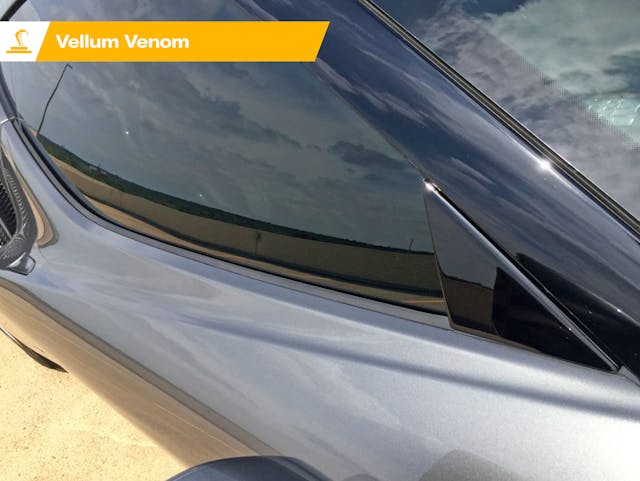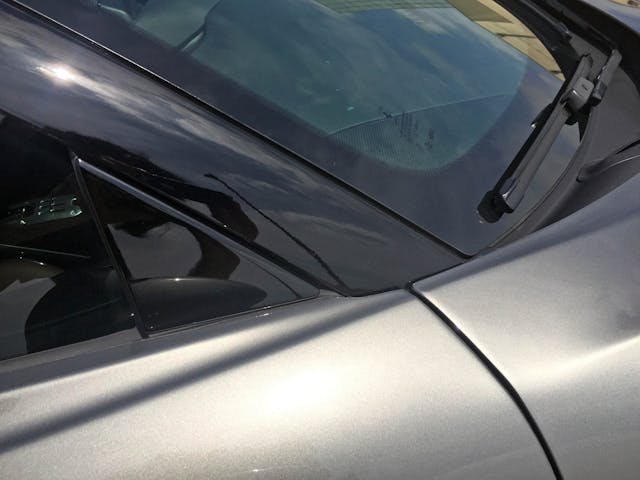Media | Articles
Vellum Venom Vignette: The other DLO FAIL?

Hagerty Community member Odeen writes:
Hi Sajeev, I’ve been a fan of your work for ages, and I’ve been meaning to ask for your opinion about this. Given your stance on DLO FAIL, what are your thoughts about door-skin-mounted mirrors and the black plastic triangles at the base of the A-pillar, like the Ferrari SF90?
It’s also there on the Nissan GTR, Challenger, Mustang, Camaro, second-gen-on New Mini, GTR, and the C8 Corvette, to name a few. I figure they should use the area to attach the rearview mirror. This makes the black plastic triangle from fake DLO into a structural component.

Or install a quarter window like we’ve had for ages, think the Tesla Model S or Toyota GT 86 / Subaru BRZ.

Or do a radical staggered door cutout and have yourself a window between the door and the windshield. Examples include the eighth-gen Civic, Mk7 Golf/GTI, second-gen Prius, Previa, and the GM Dustbuster minivans.
Marketplace
Buy and sell classics with confidence

Or just … don’t. If the first-gen New Mini, along with countless older cars managed to just have single trapezoidal windows in driver and front passenger doors, maybe figure out how to accomplish the same on a much more expensive car that has access to much more exotic materials than a fancy compact.
Sajeev answers:
You did a fantastic job summarizing the problem and its proposed solutions. Put another way, thanks for doing my job for me!
Now I get to be the wet blanket. I propose two reasons why this can’t work: aerodynamics and the ability for a window to roll into the door. It’s all about space, as modern cars have more interior room (thanks for that, Chrysler LH cars) and less room elsewhere. Take the retro Mini Cooper: Note that it has a fair bit of space between the dash and the front axle. The SF90?
Yeah, not so much. Midengine super cars with big wheel arches and curvy door cutlines don’t have that luxury. That little black triangle likely gives just enough room for a narrower piece of glass to successfully navigate all the pitfalls inside a door: crash structures, speakers, levers, wires, and window regulators. Put another way, this black plastic triangle creates narrower, more “forgiving” window forms that allow for crazier body designs. Like, awesome.
Now to the aerodynamic part: Sometimes a door-mounted sideview mirror is superior in terms of noise or rainwater management (i.e. it doesn’t generate a distracting stream of water across your door glass at highway speeds). They could also be more aerodynamic, depending on the rest of the vehicle’s design. Put another way, there are too many design variables in play.
Perhaps I haven’t said it enough, but there are always too many design variables in these situations. And today it’s nearly impossible to make truly beautiful cars that perform like the “ugly ones” on a budget that ordinary, non-Tesla/Aston/whatever-owning folks can afford. There are safety concerns (most infamously, pedestrian safety—see today’s tall bumpers), cost issues, fuel economy needs (i.e. aerodynamics), and a slew of internal corporate concerns that can’t be reduced to comments like “Oh, those beancounters ruined a design with DLO FAIL yet again!”
So are the black plastic triangles added to front (or rear) door glass worthy of the same ire generated by DLO FAIL? Nah, there’s probably too much going on behind the scenes of this bit o’ black plastic. But if someone can prove me wrong, well, I’d just love to read all about it!

















